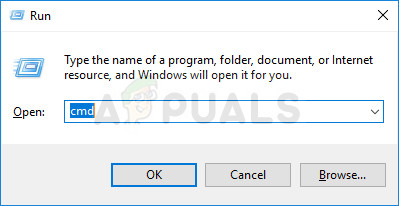Verify the Items Location and Try Again
This error will appear when you are trying to access a sure file either to delete, rename, or open it. Logically speaking, if you can locate and view a file on your calculator, you should also have clear access to it. However, this foreign mistake occurs and you are unable to do annihilation with that file.

Sometimes this occurs with files created by 3rd-party services and it occurs because the file's extension is not properly divers. There are other obscure causes as well. Follow the several methods in this commodity to either delete the file successfully since that is what users most want to do. Good luck!
Solution one: Utilize the Following Command to Delete the Problematic File
This is 1 of the commands which tin be used to delete the problematic file or folder. Deleting information technology may exist important if information technology is linked to the software you uninstalled a while ago, especially if the file takes upwardly a lot of space on the disk. Endeavour this method only brand sure you type in the correct path to the file instead of our placeholder.
- Search for "Command Prompt" either in the Start menu or past clicking the search button correct next to it, right-click on it, and select the "Run as ambassador" selection. You can also apply the Windows Key + R key combination and type in "cmd" in the Run dialog box.

- Copy and paste the command below and make sure you tap the Enter key on your keyboard subsequently. Also, brand sure to use the right path to the file including its proper name. X is the placeholder letter too, you should input the letter respective to the drive'due south alphabetic character where the file is located.
rd /s \\?\X:\bad\folder\path
- You should see the Functioning completed successfully message. If you don't check to come across if you have input the file'southward location correctly. If you have, try checking out other solutions below.
Solution two: A Control Prompt Tweak to Rename the Folder and Operate with it Normally
If y'all don't want to delete the binder (if it contains of import files), y'all tin rename it using these commands to a non-problematic proper name and deal with it the normal style by handling it via Windows Explorer. Follow the commands below carefully.
- Search for "Command Prompt" either in the Start menu or past clicking the search button right adjacent to information technology, correct-click on it, and select the "Run as administrator" option. You tin can also use the Windows Key + R key combination and type in "cmd" in the Run dialog box.

- Type in cd followed by the path to the file in the format C:\Folder1\Folder2\Folder3. However, this time you demand to omit the problematic file. In other words, the last binder in the command should be the folder where the problematic file is located:
cd C:\Folder1\Folder2\Folder3
- Printing Enter after this control. Utilize the post-obit set of commands which will exist displayed below. Each command is in a new line so printing Enter afterward you lot type in or re-create each line:
DIR /A /X /P RENAME (the current name of the problematic file) (a non-problematic proper name) Exit
- Make sure you lot but write the current name and the new name separated by a infinite. Don't write the brackets in the command. If everything goes well, you should now be able to operate the file usually via Windows Explorer.
Solution three: File without Whatever Extension
This method can be practical to scenarios where the problematic file does not have a viable extension meaning Windows but doesn't know what to practice with information technology and information technology displays the fault bulletin from above. The usual scenario occurs with files created by browser plugins (Mozilla Firefox plugins near notably) so here is how you can delete those files:
- Follow steps 1 and two from the solution above in order to correctly navigate to the file's location on your estimator. Be conscientious while inputting the folders.
- Printing Enter later on the command and use the following one in lodge to delete the problematic file with the problematic extension (or the lack of one, to be more exact):
del *.*
- Open File Explorer to check if the file is really gone.
Solution 4: Workaround with Archiving
This solution is more of a workaround simply information technology gets the job done every bit a side-effect of another action. That being said, it's perfect for users who don't similar using Command Prompt and who want to practice everything using their mouse in a graphical environment. It's also piece of cake to use and then brand you try this ane out!
- Offset of all, y'all will demand a program named "WinRAR". It can exist downloaded from this link.
- Locate the problematic file or folder on your computer by navigating to it in File Explorer. Right-click on it and choose the Add to archive pick from the context menu.
- When the archiving options window opens, locate the Delete files later on archiving option and make sure you select information technology. Click OK to start the archiving process and, after it finishes, you should discover that your problematic file is missing!

- Delete the archive you created as well by right-clicking on it and choosing the Delete option from the context menu.
wrightrivinquister.blogspot.com
Source: https://appuals.com/how-to-fix-the-could-not-find-this-item-this-is-no-longer-located-in-path-verify-the-items-location-and-try-again/
0 Response to "Verify the Items Location and Try Again"
Post a Comment